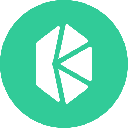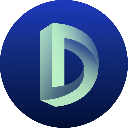-
 bitcoin
bitcoin $115178.669275 USD
3.07% -
 ethereum
ethereum $4187.145122 USD
5.98% -
 tether
tether $0.999974 USD
-0.02% -
 xrp
xrp $2.657749 USD
1.76% -
 bnb
bnb $1143.755467 USD
1.88% -
 solana
solana $204.642189 USD
5.78% -
 usd-coin
usd-coin $0.999808 USD
-0.01% -
 dogecoin
dogecoin $0.207825 USD
5.98% -
 tron
tron $0.300913 USD
1.42% -
 cardano
cardano $0.687188 USD
5.24% -
 hyperliquid
hyperliquid $48.081828 USD
8.50% -
 chainlink
chainlink $18.790575 USD
4.94% -
 bitcoin-cash
bitcoin-cash $558.997512 USD
8.92% -
 stellar
stellar $0.333150 USD
2.01% -
 ethena-usde
ethena-usde $0.999206 USD
0.00%
What are the main differences between OpenSea and LooksRare?
OpenSea dominates as a user-friendly, multi-chain NFT marketplace without token rewards, while LooksRare incentivizes trading with its LOOKS token and decentralized governance.
Oct 12, 2025 at 12:01 pm
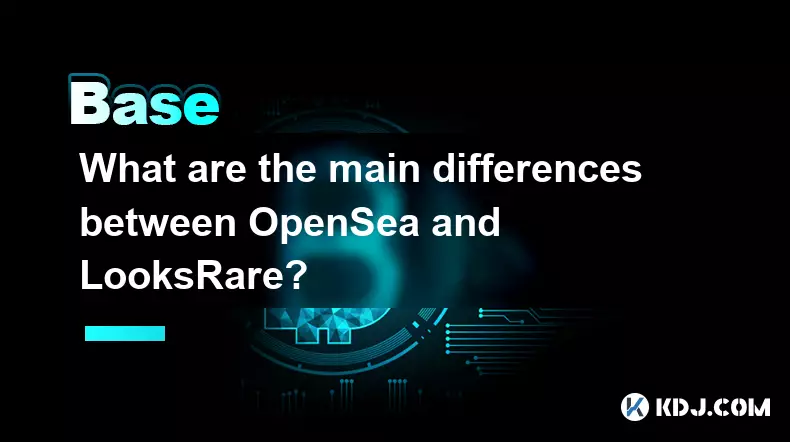
Main Differences Between OpenSea and LooksRare
1. OpenSea operates as the largest and most established NFT marketplace, offering a broad range of collections across multiple blockchains including Ethereum, Polygon, and Solana. Its user interface is designed for accessibility, catering to both beginners and experienced collectors. The platform charges a 2.5% transaction fee and does not distribute tokens directly to users based on trading volume.
2. LooksRare positions itself as a community-driven alternative that rewards active participants through its native token, LOOKS. Traders earn weekly rewards in LOOKS proportional to their trading volume, creating an incentive structure that encourages platform usage. This model emerged after the rise of another competitor, rewarding liquidity providers and traders alike, aiming to decentralize control over the marketplace.
3. OpenSea relies on centralized curation for featured drops and collections, often partnering with well-known brands and creators. While it allows anyone to mint and list NFTs, visibility is influenced by editorial decisions and algorithmic promotion. In contrast, LooksRare emphasizes on-chain activity and transparency, where all trades and reward distributions are verifiable directly on the blockchain.
4. The revenue distribution model differs significantly. OpenSea retains fees entirely as platform income without redistributing them to users, while LooksRare directs a large portion of trading fees toward stakers and traders. This redistribution is automated via smart contracts, reinforcing trustless operation and aligning incentives across the ecosystem.
5. Regarding security and contract audits, both platforms have undergone external reviews, but OpenSea has faced criticism in the past due to phishing attacks enabled by approved listings. LooksRare requires users to revoke access more frequently due to its reliance on account approvals, which increases user responsibility but also enhances awareness around wallet permissions.
User Incentive Structures
1. On OpenSea, incentives are limited to occasional airdrops from specific NFT projects or seasonal campaigns run by the platform. There is no ongoing token-based reward system tied to trading behavior. Users participate primarily for discovery and acquisition rather than financial return on trading activity.
2. LooksRare's entire economic design revolves around incentivizing trade volume through token emissions. Every week, users who have either listed or traded NFTs receive LOOKS tokens based on their share of total platform volume. This creates a feedback loop where higher participation leads to greater rewards, attracting short-term traders and arbitrageurs.
3. To qualify for rewards, users must hold at least 10 LOOKS tokens or provide liquidity to designated pools. This threshold ensures that only committed participants benefit, reducing spam and sybil attacks. Rewards are claimable every seven days and distributed automatically once claimed.
4. The incentive mechanism has led to inflated trading volumes on LooksRare, with some activity driven purely by reward farming rather than genuine interest in assets. This contrasts with OpenSea, where volume typically reflects actual market demand and collector behavior.
5. Both platforms allow gas-free listing options, but LooksRare leverages this feature more strategically by combining it with reward eligibility. Sellers can list without paying upfront gas fees and still earn rewards if their item trades, increasing participation from smaller holders.
Marketplace Governance and Token Utility
1. OpenSea does not currently have a governance token, meaning all strategic decisions are made internally by the company. Community input is gathered through surveys and social channels, but there is no formal voting process or decentralized autonomy.
2. LooksRare launched with a governance token from inception, allowing LOOKS holders to vote on protocol upgrades, fee changes, and treasury allocations. This gives users direct influence over the platform’s evolution, fostering a sense of ownership among participants.
3. A significant percentage of LOOKS supply was allocated to early users and liquidity providers, following a retroactive distribution model similar to other DeFi protocols. This approach helped bootstrap adoption quickly by rewarding those who contributed during the initial phase.
4. OpenSea’s lack of a token has drawn criticism from decentralization advocates, especially after competitors introduced reward systems. However, the company argues that avoiding a token keeps the focus on usability and long-term sustainability rather than speculative incentives.
5. Treasury management differs substantially. LooksRare’s treasury is managed via multi-signature wallets and governed proposals, with funds used to support development, marketing, and ecosystem grants. OpenSea’s finances remain private, typical of a traditional tech startup, though it has raised substantial venture capital funding.
Frequently Asked Questions
What determines eligibility for rewards on LooksRare?Users must either hold at least 10 LOOKS tokens or have provided liquidity to qualifying pools. Additionally, they need to have completed eligible trades or listings during the reward period to receive weekly distributions.
Does OpenSea support NFTs on blockchains other than Ethereum?Yes, OpenSea supports multiple chains including Polygon, Solana, Arbitrum, Optimism, and Base. This cross-chain functionality allows users to explore lower-cost markets and diverse ecosystems within a single interface.
How do I revoke marketplace access to my wallet on these platforms?You can use third-party tools like Revoke.cash or Etherscan’s token approval checker to review and cancel active permissions granted to OpenSea, LooksRare, or any other service that interacts with your wallet.
Are NFT royalties enforced differently between the two platforms?LooksRare enforces royalties at the contract level for certain collections, while OpenSea transitioned to optional enforcement after backlash from users. Some creators now receive inconsistent royalty payments depending on which marketplace handles the sale.
Disclaimer:info@kdj.com
The information provided is not trading advice. kdj.com does not assume any responsibility for any investments made based on the information provided in this article. Cryptocurrencies are highly volatile and it is highly recommended that you invest with caution after thorough research!
If you believe that the content used on this website infringes your copyright, please contact us immediately (info@kdj.com) and we will delete it promptly.
- Essex Post Office, 5p Coins, and King Charles: A Royal Mint Revelation!
- 2025-10-23 10:30:16
- Waymo's Newark Airport AV Tests: Alphabet's AI Gamble Pays Off?
- 2025-10-23 10:30:16
- King Charles 5p Coins: A Royal Flush in Your Pocket?
- 2025-10-23 10:35:18
- Solana, Crypto Advisory, and Forward Industries: A New York Minute on the Future of Finance
- 2025-10-23 08:51:22
- MAGACOIN: Ethereum Whales Dive into the Hottest Presale of 2025
- 2025-10-23 08:51:22
- Kadena's End of the Road? KDA Token Plummets Amid Project Abandonment
- 2025-10-23 08:55:34
Related knowledge

How do decentralized identity (DID) solutions work?
Oct 14,2025 at 11:36pm
Understanding Decentralized Identity in the Blockchain Ecosystem1. Decentralized identity (DID) solutions are built on blockchain networks, allowing i...
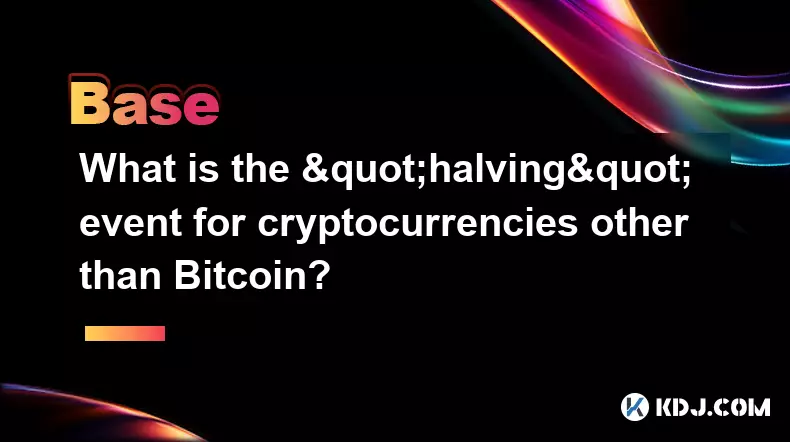
What is the "halving" event for cryptocurrencies other than Bitcoin?
Oct 25,2025 at 12:19pm
Decentralized Exchanges Gain Momentum in 20241. Decentralized exchanges (DEXs) have seen a surge in trading volume as users prioritize control over th...
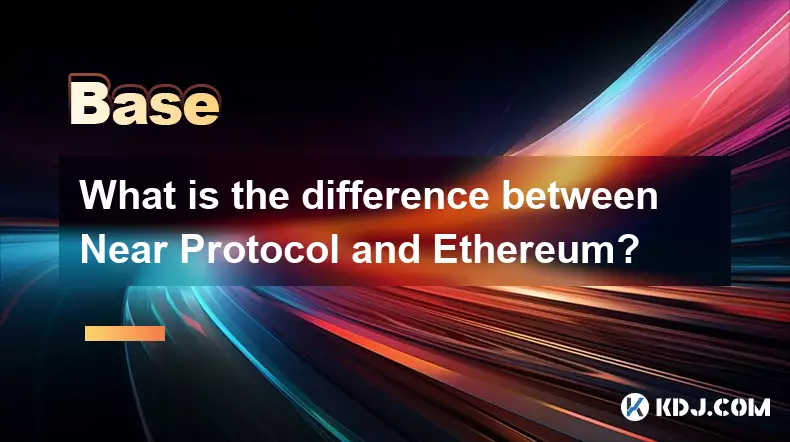
What is the difference between Near Protocol and Ethereum?
Oct 15,2025 at 08:01am
Near Protocol and Ethereum: Core Architectural Differences1. Near Protocol operates on a sharded blockchain architecture known as Nightshade, which al...

What does it mean for code to be "open source" in crypto?
Oct 12,2025 at 01:54pm
Understanding Open Source in the Cryptocurrency Ecosystem1. In the context of cryptocurrency, open source refers to software whose code is publicly ac...

What is the purpose of a "testnet"?
Oct 12,2025 at 09:01am
Understanding the Role of Testnets in Blockchain Development1. A testnet serves as a parallel version of a blockchain network, designed specifically f...

How to avoid phishing scams in crypto?
Oct 13,2025 at 06:18pm
Understanding Common Crypto Phishing Tactics1. Cybercriminals frequently use fake websites that mirror legitimate crypto exchanges or wallet platforms...

How do decentralized identity (DID) solutions work?
Oct 14,2025 at 11:36pm
Understanding Decentralized Identity in the Blockchain Ecosystem1. Decentralized identity (DID) solutions are built on blockchain networks, allowing i...

What is the "halving" event for cryptocurrencies other than Bitcoin?
Oct 25,2025 at 12:19pm
Decentralized Exchanges Gain Momentum in 20241. Decentralized exchanges (DEXs) have seen a surge in trading volume as users prioritize control over th...

What is the difference between Near Protocol and Ethereum?
Oct 15,2025 at 08:01am
Near Protocol and Ethereum: Core Architectural Differences1. Near Protocol operates on a sharded blockchain architecture known as Nightshade, which al...

What does it mean for code to be "open source" in crypto?
Oct 12,2025 at 01:54pm
Understanding Open Source in the Cryptocurrency Ecosystem1. In the context of cryptocurrency, open source refers to software whose code is publicly ac...

What is the purpose of a "testnet"?
Oct 12,2025 at 09:01am
Understanding the Role of Testnets in Blockchain Development1. A testnet serves as a parallel version of a blockchain network, designed specifically f...

How to avoid phishing scams in crypto?
Oct 13,2025 at 06:18pm
Understanding Common Crypto Phishing Tactics1. Cybercriminals frequently use fake websites that mirror legitimate crypto exchanges or wallet platforms...
See all articles


















